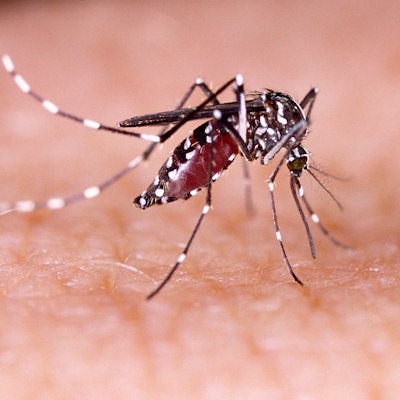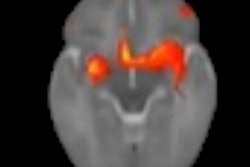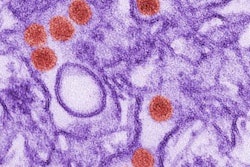
Cranial ultrasound showed lenticulostriate vasculopathy to be more common in infants exposed to the mosquito-borne Zika virus in research from Brazil published June 29 in Radiology.
A team of researchers led by Sara Reis Teixeira, PhD, from the University of São Paulo found that lenticulostriate vasculopathy, a cranial ultrasound finding related to pre- or perinatal brain injury, was nine times more frequent in infants exposed to the Zika virus infants than in otherwise healthy infants.
"Our results demonstrate a spectrum of neuroimaging findings in a large cohort of infants born to infected pregnant women and support recent guidelines in recommending postnatal cranial ultrasound for all infants with possible congenital Zika virus infection, regardless of the presence of microcephaly," the study authors wrote.
Zika virus infection during pregnancy may lead to a wide range of central nervous system changes, the researchers noted. While most previous studies have assessed patients who are severely affected, such as having microcephaly, there is little information on abnormalities in infants with normal head size.
The investigators wanted to find out the prevalence of cranial ultrasound findings in a large group of infants born to women with Zika virus infection compared with infants born to mothers not infected. They also wanted to study signs of prenatal Zika virus exposure on cranial ultrasound scans, looking at infants from the 2015-2016 Zika virus outbreak in southeast Brazil.
"Neuroimaging is a fundamental component of the diagnostic evaluation of infants at risk for congenital Zika virus syndrome," the authors wrote. "Information regarding the spectrum of brain findings in a large cohort of infants born to infected women is still scarce."
The study included 220 infants exposed to the Zika virus, with an average age of 53.3 days. Of these, 113 were boys and 107 were girls. Meanwhile, 170 infants with an average age of 45.6 days (102 boys, 68 girls) who were not exposed to the virus were in a control group.
Cranial ultrasound found a Zika virus-like pattern in 11 of the 220 virus-exposed infants, but not in the control group infants.
Calcifications and subcortical calcifications were found only in Zika-exposed infants. Other intracranial calcifications, such as those in the basal ganglia, periventricular area, and scattered in the brain, were also associated with virus exposure. However, the frequency of most mild cranial ultrasound findings did not significantly differ between both groups.
Notably, lenticulostriate vasculopathy was seen in 12 of the virus-exposed infants, compared with only one infant in the control group (p = 0.01).
The team stated that further studies are needed to evaluate the potential clinical significance of lenticulostriate vasculopathy and other mild cranial ultrasound findings in infants exposed to Zika virus.
In an accompanying editorial, Dr. Carol Benson from Harvard Medical School wrote that long-term neurodevelopmental outcomes in infants exposed to the virus in utero are also needed to determine how best to counsel patients exposed while pregnant, as well as to understand the clinical significance of mild sonographic abnormalities in infants.




















